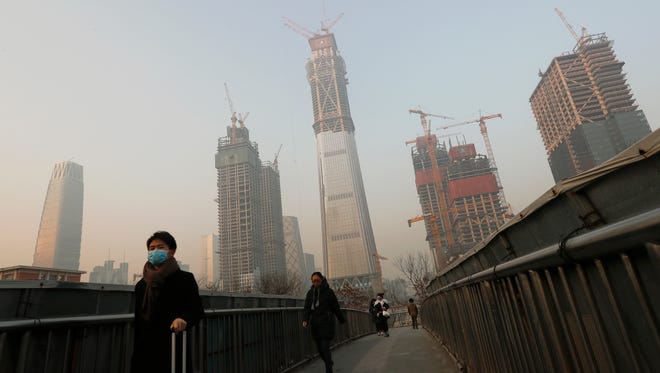How your cheap Chinese-made products may be killing thousands in China

Your cheap Chinese-made possessions may be costing lives, scientists say.
Air pollution from the manufacture of goods made in one part of the world but used in another killed more than 700,000 people globally in 2007, the most recent year for which figures were available for analysis, according to a new study in this week’s Nature.
Hardest hit were Asian countries, especially China, home to countless factories that produce choking levels of air pollution as well as popular export products such as smartphones, shoes and furniture. Most of the products and services driving those deaths, however, were bought or used in the United States and Western Europe. Researchers traced 11% of Chinese air-pollution deaths to goods and services used in the United States and western Europe, the biggest importers of Chinese products.
“We may be benefitting from lower prices, but they may be coming at the expense of someone else’s health,” says study co-author Michael Brauer of Canada’s University of British Columbia. “There is no free lunch.”
The study’s authors focused on lives lost to an especially hazardous form of contaminant called fine particulates. These microscopic bits of pollution, which can travel deep into the lungs, have been linked to lung cancer, stroke and other diseases. Fine particulates from power plants and factories are a main component of China’s notorious air pollution. They’re also far more deadly than ozone, another principal ingredient in dirty air.
Researchers began with pollution tallies from a wide variety of sources, such as trucks and manufacture of plastics. They worked out each country's share of air pollution from each source and predicted where that pollution travels. That information, combined with formulas that forecast deaths linked to particulate levels, allowed them to calculate the deaths from individual sources.
The results showed fine particulates killed some 3 ½ million people worldwide in 2007. The study links nearly a quarter of those deaths to goods and services enjoyed somewhere else. China, for example, suffered 238,000 deaths of this type. The rest came from pollution that wafted into China from the manufacture of goods made and used somewhere else, such as India. By comparison, nearly 1.2 million Chinese overall died from air pollution-related diseases in 2015.
Consumption in the United States led to roughly 100,000 deaths outside U.S. borders, about half of them in China, the researchers estimate. That makes Americans second to Western Europeans, whose habits led to 170,000 deaths.
Researchers long suspected trade as a culprit for air-pollution deaths. But the effect turns out to be “pretty remarkable,” says Jason West of the University of North Carolina, Chapel Hill, who was not involved with the study. Adding in the health effects of ozone would drive the numbers higher, West says.
Nations could crack down on pollution within their own borders, but restrictions could just drive factories elsewhere. “Another country would step up and say, hey, we’re willing to have our people die to have that business,” says study co-author Steven Davis of the University of California, Irvine.
It takes global cooperation to prevent such a “race to the bottom,” the study’s authors say. They also called on shoppers to switch from cheap, throwaway goods to more durable items. “We need to make sustainable consumerism the fashion,” says study co-author Dabo Guan of China’s Tsinghua University and Britain’s University of East Anglia.
President Trump has proposed tariffs on imports to protect American jobs, and those tariffs could also help reduce deaths from trade-related air pollution. But the study highlights a hidden cost of that form of relief.
“Now you can see what sort of jobs have been moving from the USA and Europe to China and India and Asia,” says Jos Lelieveld of Germany’s Max Planck Institute for Chemistry, who was not involved with the study. “They’re associated with pollution.”